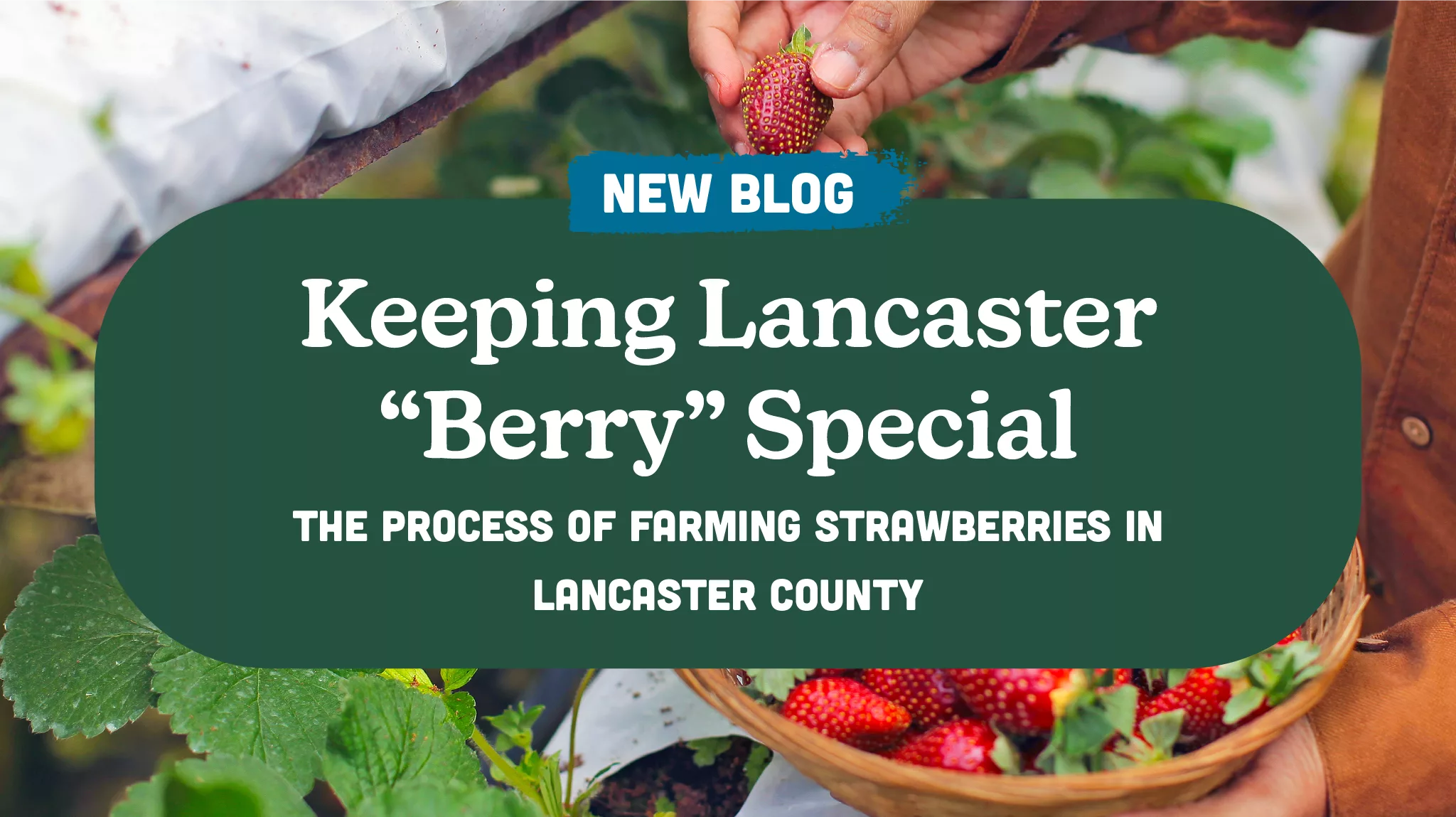Keeping Lancaster “Berry” Special

It’s one of the best times of year in Lancaster County—strawberry season! Strawberries are a Lancaster staple—signaling the start of summer and the return of yearly festivals. But what does it take to grow strawberries in Lancaster County? Today, we’re digging into the process of strawberry farming, from seed to sale!
Why Lancaster?
Lancaster County is famous for its productive, non-irrigated soil, making it one of the best spots in the nation for farm-fresh produce. More than 50% of the county is comprised of prime-classified farmland, distinguished by the U.S. Natural Resources Conservation Service.
Strawberries require rich, well-drained soil for sufficient growth. Lancaster County’s soil tends to be loamy, a soil mixture of sand, silt, and clay. Loamy soils provide crops with good aeration and drainage, making them the perfect environment for healthy strawberries.
While Lancaster County offers excellent soils for strawberries, the season is very short due to rainfall and temperature variability, as well as the plant’s relatively short lifespan. Some varieties of strawberries only fruit in May or June.
Many family-owned farms in the area have passed down techniques for growing strawberries through generations, refining their methods to produce high yields of sweet, juicy berries. As a result, visitors travel far and wide to get a taste.
How Do Strawberries Grow?
Strawberry farmers in Lancaster typically grow two kinds of berries: June-bearing strawberries or day-neutral strawberries.
June-bearing strawberries are the most common type and provide a large crop once a year, typically in late May or early June. Day-neutral strawberries produce smaller harvests throughout the growing season, allowing for continuous production. These are more popular for pick-your-own operations or small markets.
After choosing varieties, farmers prep the soil. Soil prep begins in late summer or fall of the year before planting. Farmers test the soil’s pH and nutrient levels, as strawberries prefer slightly acidic soil (pH 5.5–6.5). If the soil’s pH is too low or high, farmers amend it with compost or lime. Most PA farmers grow their strawberries directly in fields, but some opt for raised beds or plasticulture to prevent root rot. Planting typically occurs in March or April, depending on weather and soil conditions.
Strawberries need consistent care from planting to harvest. Farmers monitor their crops daily, especially during the flowering and fruiting stages of growth. During plant monitoring, farmers regularly check to ensure that the berries have sufficient weed control, adequate soil moisture, and proper fertilization. While Lancaster County has the most productive non-irrigated soil in the world, farmers may have to water their plants during dry spells or heat waves. Growers also inspect their plants for weeds, pests, and diseases during the growing season, treating them as needed.
By late May or early June, Lancaster farms are buzzing with activity. Strawberries ripen quickly, and farmers must harvest them daily to ensure peak freshness and quality. While many crops are harvested with machinery, most Lancaster farmers pick strawberries by hand to avoid damage to the fruit. Harvesting typically occurs early in the morning to minimize heat exposure and maintain berry firmness.
After harvest, many family farms sell strawberries at local on-farm markets, roadside stands, and regional grocery stores. Other farms don’t harvest their strawberries to offer visitors a pick-your-own experience! For a list of some of our favorite farmstands and markets to visit during strawberry season, click here!
Strawberries are one of many seasonal crops that Lancaster County is famous for. Whether you’re picking berries on a sunny June morning or buying a fresh pint from a farm stand, you’re tasting the result of months of hard work and dedication. So, next time you bite into a fresh strawberry, thank the farmers and land that makes it all possible.
Want to learn more about strawberry farming in Lancaster County? Check out the references below!
References:
https://extension.psu.edu/growing-strawberries
https://extension.psu.edu/strawberry-production
https://www.lancasterfarming.com
https://www.pickyourown.org/PAlancaster.htm
chrome-extension://efaidnbmnnnibpcajpcglclefindmkaj/https://co.lancaster.pa.us/DocumentCenter/View/19/Introduction
